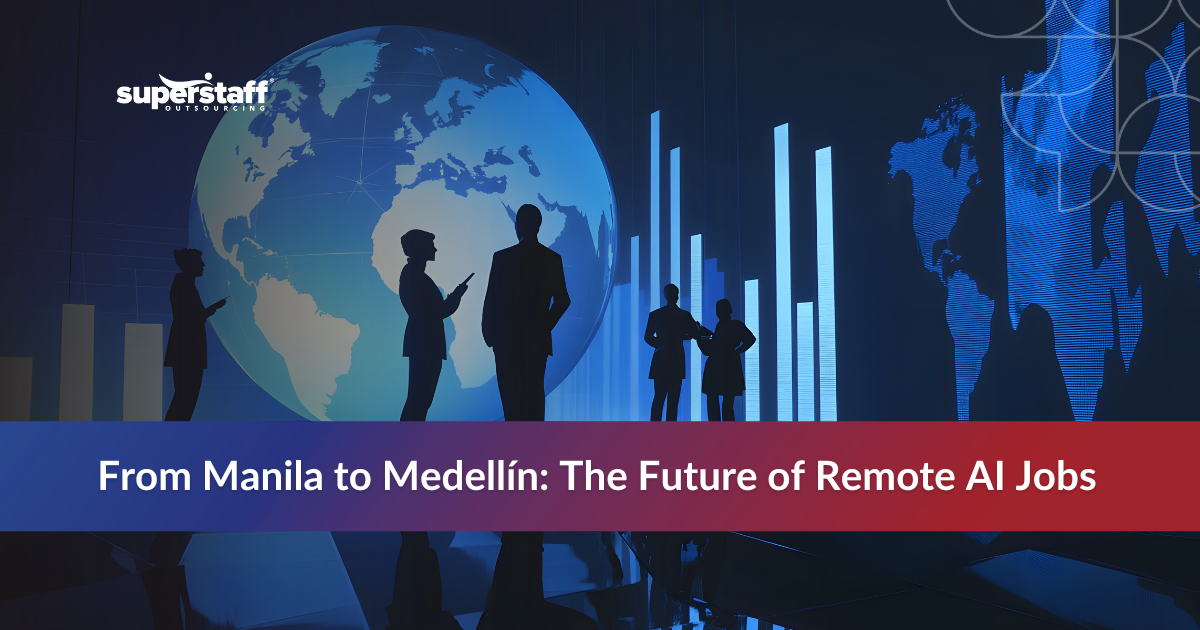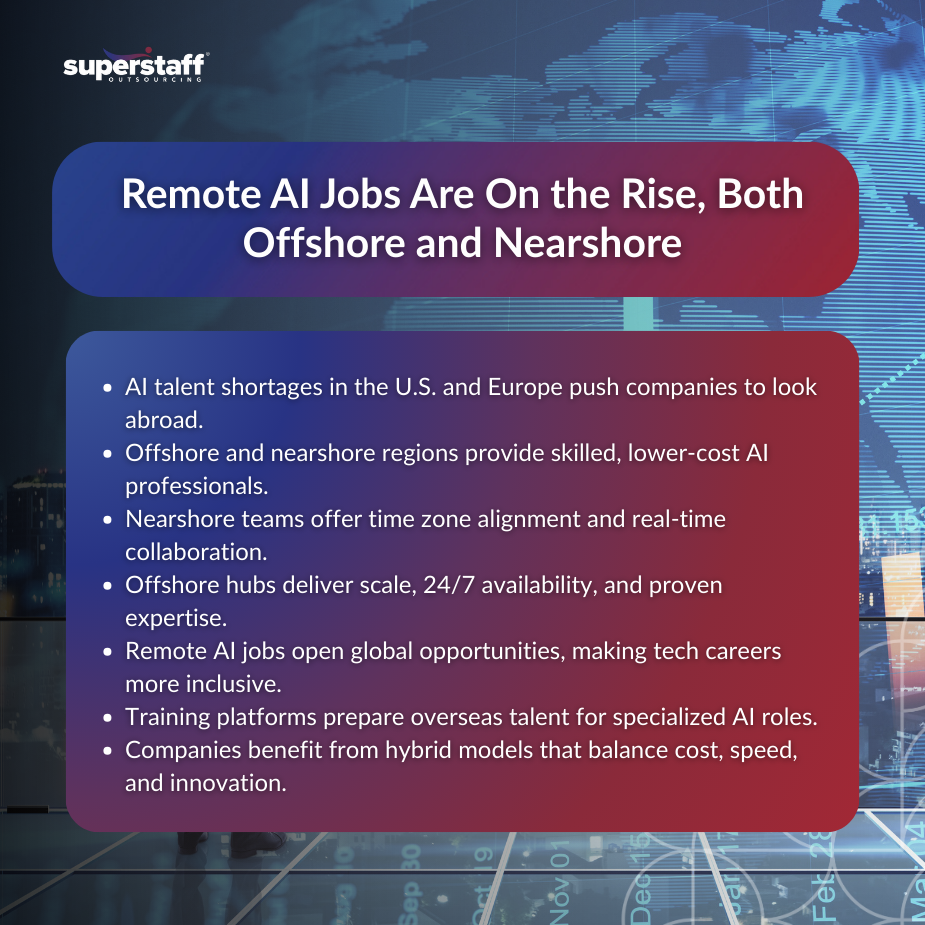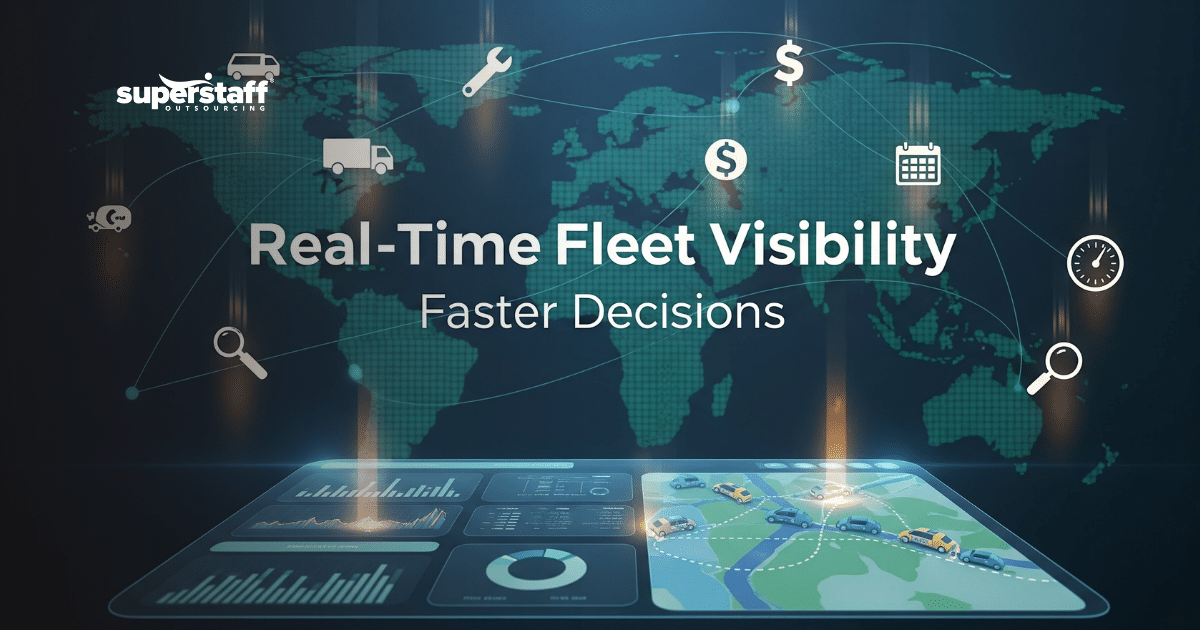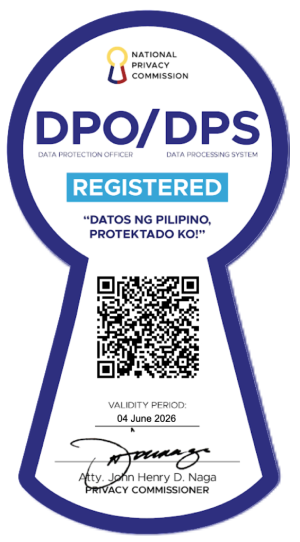
The rise of artificial intelligence is transforming more than just the technology powering businesses; it’s redefining the very nature of work itself. As organizations scramble to adopt AI-driven solutions, the demand for skilled professionals has skyrocketed, giving rise to a new era of remote AI jobs.
No longer confined to Silicon Valley or a handful of global tech capitals, these roles are now accessible to talent across the world. Remote work has become the great equalizer, allowing companies to tap into offshore and nearshore hubs where AI expertise is both abundant and affordable.
From the Philippines to Colombia, emerging markets are stepping into the spotlight, offering businesses agility, scalability, and cultural compatibility. Offshore and nearshore remote AI jobs are not just filling workforce gaps; they are actively reshaping the future of tech work by fostering a truly borderless world.
This blog will explore how businesses are embracing this shift and how professionals worldwide are adapting to seize the opportunities of this global AI workforce transformation.
The Global Demand for AI Talent Is Outpacing Supply in Traditional Tech Hubs
The AI revolution has created unprecedented demand for talent. But while the technology continues to evolve at breakneck speed, the workforce needed to support it has not kept pace. Companies across the United States and Europe are struggling to hire skilled AI engineers, data scientists, and machine learning specialists.
In major U.S. cities, salaries for AI engineers often exceed $150,000 annually, sparking intense competition among firms ranging from established tech giants to early-stage startups. This “talent war” isn’t just about compensation; it’s about availability. Even with premium pay, many organizations simply cannot find enough qualified candidates domestically.
Europe faces a similar challenge. While the European Union has made major investments in AI innovation, the pipeline of graduates with the required technical skills is still relatively small compared to demand. This tech talent shortage has slowed the rollout of critical projects and forced companies to consider alternatives.
The appeal of offshore and nearshore markets lies in their ability to meet these gaps. By looking beyond traditional tech hubs, businesses gain access to large pools of skilled talent at more sustainable costs. What once required relocation or costly domestic hiring can now be achieved through remote AI jobs—a model that is transforming how companies think about workforce planning.
With shortages driving the search for new talent sources, companies are reimagining hiring beyond borders.
Offshore and Nearshore Destinations Have Become Vital Pipelines for AI Talent
The growing need for remote AI jobs has elevated offshore and nearshore regions into essential pipelines of skilled professionals. Countries like the Philippines, India, and Colombia are no longer viewed simply as back-office hubs. They are rapidly emerging as credible providers of advanced AI capabilities.
One major advantage is the abundance of STEM graduates. The Philippines produces tens of thousands of IT and engineering graduates each year, many of whom are fluent in English and eager to work in global markets. Meanwhile, Colombia is building its reputation as Latin America’s rising star, combining strong digital literacy with government support for tech innovation.
Lower costs of talent acquisition also make these destinations attractive. Hiring offshore or nearshore professionals can reduce labor expenses by up to 60%, enabling businesses to scale without ballooning budgets. This financial advantage is not about “cheap labor” but about smart allocation of resources. Companies can reinvest savings into research, infrastructure, and innovation.
Cultural compatibility and communication skills further strengthen these regions’ value. Filipino professionals, for example, are renowned for their customer service orientation and adaptability, while Colombian workers often share cultural similarities with U.S. clients due to geographic proximity. Together, these qualities ensure seamless integration into global teams.
Beyond cost and skill, location matters in shaping collaboration models.

Nearshore AI Roles Provide Time Zone Alignment and Real-Time Collaboration Advantages
While offshore destinations provide scale, nearshored AI roles offer a unique edge: time zone alignment. For U.S. companies, collaborating with teams in Latin America means working within the same or adjacent time zones. This makes real-time communication more natural, reducing delays and improving overall productivity.
Colombia stands out as a prime nearshore hub for remote AI jobs. The country’s strong bilingual talent pools (Spanish-English) allow companies to serve both U.S. and Latin American markets. This dual-language advantage enhances customer experience while broadening market reach.
Real-time collaboration is especially critical for AI-related work. Training models, troubleshooting data pipelines, and deploying machine learning solutions often require continuous feedback loops. Nearshore teams enable U.S. businesses to keep projects moving without the lag that can sometimes occur in offshore arrangements.
Another benefit is cultural familiarity. Shared holidays, overlapping business practices, and similar communication styles make collaboration smoother. These “soft factors” play a significant role in building trust between teams and clients.
While nearshore teams bring immediacy, offshore hubs continue to dominate with scale.
Offshore AI Jobs Remain the Backbone of Scalable Tech Operations
Despite the rise of nearshoring, offshore remains the backbone of scalable AI operations. Countries like the Philippines and India have built robust ecosystems capable of handling everything from customer-facing AI chatbots to complex algorithm development.
One advantage of offshore remote AI jobs is round-the-clock availability. Time zone differences become an asset, allowing companies to operate 24/7. A U.S. firm can assign work to a Philippine team at the end of its workday and receive results by morning. This “follow-the-sun” model accelerates project timelines and boosts responsiveness.
Established BPO and IT infrastructures further solidify offshore markets. The Philippines boasts a mature outsourcing industry supported by reliable connectivity, government incentives, and global corporate presence.
Most importantly, this country has proven track records of operational excellence. Decades of experience in handling international clients have equipped them to manage large-scale projects with professionalism and efficiency. Offshore tech support providers are now moving up the value chain, offering specialized AI services that rival, and in some cases surpass, domestic capabilities.
The balance between offshore and nearshore illustrates a hybrid approach to tech staffing.
Remote AI Jobs Are Redefining Inclusivity in Global Tech Careers
Perhaps the most transformative aspect of this shift is how remote AI jobs are breaking down barriers to global participation. In the past, access to cutting-edge tech roles was limited to those who could relocate to major tech hubs. Today, skilled workers in emerging economies can contribute to high-value AI projects without leaving their home countries.
For professionals in offshore and nearshore markets, this means unprecedented career advancement opportunities. A data scientist in Manila or a machine learning engineer in Medellín can now work directly with U.S. or European clients, gaining exposure to international projects and networks.
This inclusivity empowers young professionals in particular. Many are eager to prove themselves in the global marketplace, and remote AI training jobs platforms are making it easier to acquire specialized skills. Platforms offering AI bootcamps, certifications, and project-based training are bridging the gap between talent supply and industry needs. Even for applicants, tools like the Rezi AI resume builder give job seekers an edge, helping them create optimized resumes for global opportunities and stand out in competitive AI hiring pipelines.
By enabling broader participation, remote AI jobs are democratizing access to the digital economy. This shift not only benefits individuals but also strengthens the resilience of the global tech industry by diversifying its workforce.
As AI jobs globalize, companies must also rethink their workforce management strategies.
Companies Must Adapt New Strategies to Integrate Offshore and Nearshore AI Teams
Hiring offshore and nearshore talent is only the first step. To unlock the full benefits of remote AI jobs, companies must rethink how they manage, integrate, and scale their global teams.
First, collaboration tools are essential. Platforms like Slack, Microsoft Teams, and Jira are the lifelines of distributed teams, enabling seamless communication and task tracking. Without them, the productivity gains of global staffing can be easily lost.
Second, training and cultural onboarding are non-negotiable. Companies must invest in upskilling programs to ensure global teams remain at the cutting edge of AI development. At the same time, fostering cultural understanding reduces friction and builds trust. For example, training managers to appreciate cross-cultural nuances can significantly enhance collaboration.
Third, data security and compliance must be prioritized. When handling sensitive AI projects, especially those involving personal data, companies must ensure offshore and nearshore teams comply with international standards such as GDPR and HIPAA. Intellectual property protections must also be enforced through clear agreements and robust cybersecurity protocols.
For individuals seeking to break into this field, it’s equally important to understand how to land remote AI jobs from overseas. Building a strong online portfolio, leveraging AI-specific training platforms, and networking on professional platforms like LinkedIn are practical steps to securing opportunities. Many companies now recruit directly through global talent marketplaces, widening access for skilled workers worldwide.
With the right strategies, the future of AI work points toward a truly borderless ecosystem.
Seeking Remote AI Jobs? SuperStaff Is Your Best Bet
Offshore and nearshore remote AI jobs are not just a passing trend; they are laying the foundation for a borderless future in technology. The global shortage of AI talent is forcing companies to look beyond traditional hiring models, creating new opportunities for skilled professionals across emerging markets.
Offshore hubs like the Philippines provide scale and reliability, while nearshore destinations like Colombia offer time zone alignment and cultural proximity. Together, they are shaping a hybrid workforce model that balances efficiency, inclusivity, and innovation.
The rise of remote AI training jobs platforms further empowers professionals to prepare for these roles, while global hiring strategies give businesses the flexibility they need to stay competitive. For companies willing to embrace this model, the benefits are clear: lower costs, broader talent access, and around-the-clock productivity.
Businesses looking to stay ahead in the AI era must embrace this global workforce model. Partnering with providers like SuperStaff allows companies to tap into world-class offshore and nearshored AI talent, ensuring they remain competitive in an increasingly borderless digital economy.






